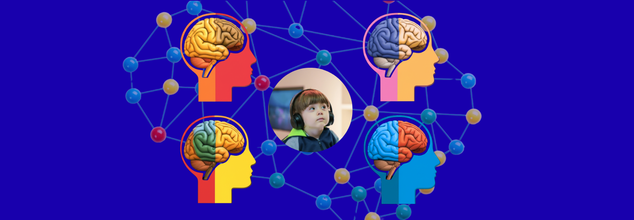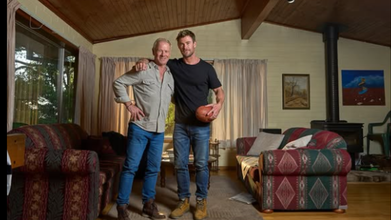- Health Conditions A-Z
- Health & Wellness
- Nutrition
- Fitness
- Health News
- Ayurveda
- Videos
- Medicine A-Z
- Parenting
Explained: New Autism Research Reveals 4 Distinct Subtypes, Links Genes To Children's Traits

Credits: Health and me
Autism has long been known yet unknown, its defining characteristics understood for decades, but its biological roots unknown. Now, a new research study conducted at Princeton University and the Simons Foundation is changing the narrative by identifying four separate genetic subtypes of autism. This study is a key turning point in understanding that autism is not one disorder, but several variations based on genetic diversity.
Autism is generally thought of as a spectrum, that is, each person exhibits a particular set of characteristics, behaviors, and abilities. To date, efforts to connect particular genes with particular behaviors have been unsuccessful. You might think of it as sitting down to try to assemble several jigsaw puzzles simultaneously, all of which share similar pieces. That is, until scientists started to sort children into categories by behavior before examining their genomes.
Natalie Sauerwald, co-author and associate research scientist at the Flatiron Institute, clarifies, "We couldn't see the whole picture…until we divided people into subtypes."
Her lab, in collaboration with Aviya Litman of Princeton, analyzed data from more than 5,300 kids between 4 and 18 who were in SPARK, a large autism cohort. They measured over 230 characteristics—social communication, repetitive behaviors, developmental milestones, anxiety, ADHD, and others. Employing sophisticated statistical modeling, they discovered four clusters, each associated with distinct genetic patterns.
The Four Autism Subtypes Identified
Social and Behavioral Challenges (37%)
Children achieve typical developmental milestones but have difficulty with social skills, repetitive behaviors, and usually suffer from ADHD, anxiety, or depression.
Mixed ASD with Developmental Delay (19%)
They have a mixture of autism characteristics with delays in early development. Co-occurring conditions are less prevalent compared to the first group.
Moderate Challenges (34%)
Traits are less severe than in other groups, and developmental milestones are on track. There are no major co-occurring conditions.
Broadly Affected (10%)
The most severely affected, this group exhibits pervasive autism characteristics, developmental delay, and intellectual disability.
Notably, the subtypes aligned directly with genetic results. The Broadly Affected subgroup had the greatest percentage of de novo mutations, genetic changes that occur spontaneously and aren't inherited.
Why Recognsing Genetic Traits Matter For Autism Diagnosis And Treatment?
The implications of the study are vast for science, medicine and families. For the first time, genes intersect meaningfully with behavior in a way that shows there isn't one biological pathway to autism. Rather, by correlating certain profiles of traits with different kinds of genetic mutations, the study demonstrates that there are several developmental pathways—representing a profound departure from the old one-size-fits-all paradigm. Clinically, it means potentially improved prognoses and more tailored treatment plans. For example, some subtypes of children may be more helped by speech and social therapy, whereas others will need targeted developmental therapies. From the research standpoint, this makes it possible for researchers to research autism in smaller, more homogeneous populations, which significantly enhances the promise of identifying targeted biological treatments that work.
Dr. Catherine Lord, a leading autism researcher not involved in the study, noted, “These groups make sense…and the connection to genetics is what makes these results most noteworthy.”
As Sauerwald stresses, these four subtypes aren’t definitive but serve as a foundation:
“We’ve discovered a data-driven framework showing there are at least four meaningful subtypes…meaningful both for clinical work and research.”
But this group was largely white and not strictly representative. Further research is required to affirm whether these subtypes hold true across the world. The question then becomes how to translate this model into day-to-day clinics—can pediatricians accurately assign subtypes, and will it lead to better outcomes?
Beyond Behavior Key Traits of Autism
Autism is typically characterized by social and behavioral issues, but there's more than meets the eye. From sensitivity to sound and light, and from stimming to masking and hyperfocus, defining characteristics go beyond behavior. Knowing these trends does a better job of describing in more complete, accurate terms how each person is affected in their own way by autism.
- Sensitivities to sound, light, taste
- Stimming routines employed for concentration or self-calming
- Masking habits, where autistic people change behavior in order to fit in
- Burnout, profound exhaustion after social overstimulation
- Literal thinking, hyperfocus, and deep special interests
Pattern combinations such as these group differently across subtypes and affect each child's developmental trajectory.
Are We Moving Toward Personalized Autism Treatment?
For parents, knowing a child's particular autism subtype may bring them much-needed clarity, direction, and hope. By having a more specific profile of their child's subtype, educational interventions can be more appropriately matched to individual strength and difficulty profiles, supporting more efficient learning assistance. Mental health treatment, as well, can be more specifically tailored to address the specific affective and behavioral tendencies associated with each subtype. Outside of clinical treatment, understanding a child's subtype can assist families in linking with others who are undergoing similar experiences, creating peer networks based on mutual understanding. And most importantly, perhaps, this information is the portal to future therapies—everything from tailored treatment regimes to possible genetic counseling or medication—all with the person's biology in mind.
In a disorder that has long defied tidy labels, this subclassification provides a whole lot more than even labels—provide guidance.
Autism's intricacy had infuriated researchers and families both. But with purposeful subtypes in place, the field now has a plan. Genetics can engage significantly with therapy and support and make a difference in people's lives.
Autism is no longer a monolithic condition—it's a spectrum within a spectrum, identified not just by diagnosis but by the biology that informs every experience.
World COPD Day 2025: Theme, History, Significance

Credits: Canva
Every year on November 19, World COPD Day is organized to raise awareness, share knowledge and discuss ways to reduce the burden of COPD worldwide. COPD stands for Chronic Obstructive Pulmonary Disease, and as per the World Health Organization (WHO), it is the fourth leading cause of death worldwide and has caused 3.5 million deaths in 2021 alone, of the 213 million people who were diagnosed with it. Projections indicate that the number of cases will increase to nearly 600 million by 2050, with a disproportionate rise expected among women and in low-and middle-income countries.
World COPD Day 2025 Theme
The theme for World COPD Day 2025 is 'Short of Breath, Think COPD'.
This year’s theme highlights a crucial issue: despite being the third leading cause of death globally, COPD is still widely overlooked and often misdiagnosed. Although it is a common, preventable, and treatable condition, many patients either remain undiagnosed or receive the wrong treatment. Early and accurate diagnosis can make a major public health difference, leading to better symptom control, improved lung function, and a higher quality of life.
Doctors stress that COPD should be suspected in anyone with persistent breathlessness, chronic cough, sputum production, recurrent lower respiratory infections, or a history of exposure to risk factors such as tobacco smoke, indoor cooking fuels, or occupational pollutants.
World COPD Day Origin
World COPD Day was launched in 2002 by the Global Initiative for Chronic Obstructive Lung Disease (GOLD) in partnership with the WHO. The first event marked a turning point in global respiratory health awareness, encouraging collaboration across continents.
Importance Of World COPD Day
The importance lies in its ability to draw attention to one of the top causes of deaths worldwide. Furthermore, this day promotes awareness by educating the public about COPD symptoms, persistent cough, breathlessness, and chest tightness, which may be mistaken as symptoms of normal aging.
It also encourages prevention of COPD, especially by emphasizing on quitting smoking, improving air quality, and reducing workplace exposures that contribute to COPD.
It also helps in the improvement of healthcare access, supports research and innovation by encouraging collaborations, and reduces stigma by helping patients overcome psychological barrier and seek timely help.
What Is COPD?
As per NHS UK, it is the name for a group of lung conditions that cause breathing difficulties. It includes:
- emphysema – damage to the air sacs in the lungs
- chronic bronchitis – long-term inflammation of the airways
COPD is a common condition that mainly affects middle-aged or older adults who smoke. Many people do not realize they have it.
The breathing problems tend to get gradually worse over time and can limit your normal activities, although treatment can help keep the condition under control.
Common Symptoms of COPD
- shortness of breath, particularly when you're active
- a persistent chesty cough with phlegm – some people may dismiss this as just a "smoker's cough"
- frequent chest infections
- persistent wheezing
Chris Hemsworth's Father Has Alzheimer’s, and Tests Show He Carries the Risk Gene Too

Credits: NatGeo/Chris Hemsworth Instagram
Talking about things makes you feel better, and the Thor star Chris Hemsworth is right at it. Now 42, he is opening up about his father, Craig's diagnosis of Alzheimer's and have seen the corrosive effects on his memory and perception already. He is now making the best of it, by having it all documented on film. While he was in the middle of making National Geographic longevity series Limitless, he learned that he too carried two copies of the Alzheimer's signifying gene APOE4, one from each parent. Back then he confronted this on camera, while on shoot, and this feels like a great idea for him to do it again on A Road Trip To Remember, an hour-long documentary that will air on NatGeo.
“There was apprehension about how this would be portrayed,” Hemsworth admits. “I asked Dad what he felt, and he was actually enthusiastic. He wanted to do it.”
The Australian actor is now taking steps to stay mentally and physically fit, especially after knowing that he is predisposed for Alzheimer's disease.
Living With More Awareness Now
Chris, who shares three children with wife Elsa Pataky, says his father's struggles have made him reflect deeply on how he lives. Some hardships in life, he notes, simply can’t be avoided.
“For me, the biggest takeaway was the comfort crisis we face,” he says, as reported in Esquire. “We settle for what’s familiar, even when it’s wrong, because the unknown feels scarier. But pushing against that is where growth happens.”
His father’s reaction to the diagnosis has also taught him that even a grim prognosis can be approached with courage. “It causes fear, but it’s also a reminder not to take anything for granted,” Hemsworth says. “While he can, Dad wants to capture as many memories as possible.”
A Trip Down The Memory Lane
At the time of filming, Craig’s symptoms were sporadic—some memory lapses, moments of confusion, but overall lucidity remained. Alzheimer’s, however, does not improve with time. Knowing this, the father-son duo set out on a cross-country motorbike trip across Australia.
They retraced old memories:
- A house in Melbourne where the family lived in the early ’90s
- A Northern Territory ranch where Craig once wrangled bulls
- A specific bend in an Outback creek where the family played when the boys—Chris, Luke, and Liam—were small
Guided only by a fading photograph and half-recalled memories, they attempted to reconnect with moments that shaped their family’s early years.
The documentary also explores reminiscence therapy, guided by Dr. Suraj Samtani from the Centre for Healthy Brain Ageing at the University of Sydney. The technique uses personal memories, photos, and familiar environments to stimulate the hippocampus, the part of the brain most affected by Alzheimer’s.
“One-on-one time with Dad was special,” Chris says. “Growing up, it was always all of us together.”
For Hemsworth, the experience has made one truth clear: the importance of connection.
“It became less about the science and more about the moments together,” he says. “Whether it’s 20 years or 20 days, hold on to every moment. Connect deeply, as often as you can.”
President Trump’s Unusually Hoarse Voice At Press Conference Sparks Health Concerns Again

Credits: GEMINI
President Trump's noticeably raspy voice drew attention during a meeting with the White House task force on the FIFA World Cup 2026 on Monday, when a reporter asked if he was feeling well. Trump replied, "I feel great. I was shouting at people because they were being foolish about something related to trade and a country, and I straightened it out, but I lost my temper with them." This has reignited discussions about Donald Trump's health.
President Trump’s Unusually Hoarse Voice at Press Conference Sparks Health Concerns
Trump’s hoarse voice caught attention as he explained it came from raising his voice at foreign leaders over his favorite topic: trade and tariffs. He sounded a bit rough during a November 17 Oval Office event, where he spoke to reporters about the U.S. hosting plans for the 2026 FIFA World Cup, as per USA Today.
"I feel great," Trump said when asked about his raspy tone. "I was shouting at people because they were stupid about something to do with trade in a country, and I fixed it. But I lost my temper with them." He added, "A country tried to renegotiate the terms of their trade deal, and I wasn’t happy." When pressed on which country, Trump refused to answer, saying, "Why would I say that to you?"
Donald Trump Health Concerns
Trump’s health has been under the microscope during his second term, particularly dark spots noticed on his hand, which he attributes to taking aspirin regularly and frequent handshakes. The White House reported he recently had an MRI as part of his annual physical, which Trump described as “standard,” though he admitted he did not know what exactly the doctors were reviewing, as per USA Today.
Earlier this year, it was also disclosed that Trump was diagnosed with a common vein condition, usually not serious with treatment, after he was seen with swollen ankles. At 79, Trump continues to insist his health is excellent.
Donald Trump MRI Scan Controversy
Trump revealed he had an MRI scan, saying the doctor called it the “best result” they had ever seen in their career. When asked which part of his body was examined, he clarified that it was all part of a “routine annual” physical. “I had no idea what they analyzed, but whatever they analyzed, they analyzed it well,” he said.
In October, Trump told reporters he underwent an MRI at Walter Reed National Military Medical Center during a “very standard” checkup, describing it as routine. When asked if it involved his brain, he said, “Getting an MRI is very standard. What, you think I shouldn’t have it? Other people get it … I had an MRI. The doctor said it was the best result he has ever seen as a doctor.”
While traveling on Air Force One to Florida, the president added, “The other thing I did … as you know … was a very advanced test on mental acuity because I believe a president should do that, and as you probably heard, I aced it.”
Journalist Mehdi Hasan reacted on X, saying: “Donald Trump says he does not know why he had an MRI. How is this not 25th Amendment territory?”
MSNBC co-host Symone D. Sanders Townsend also wrote on X Friday: “This is not routine. Why did the President need an MRI?”
As this marked Trump’s second MRI, questions have emerged about his health. Initially, the White House described his visit to Walter Reed as a “routine yearly checkup,” even though he had already had his yearly physical in April. The president later referred to it as a “semiannual physical.”
© 2024 Bennett, Coleman & Company Limited

